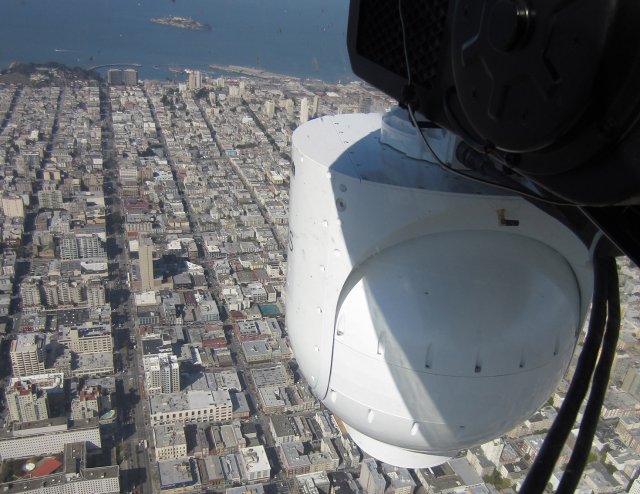 A new advanced five-axis gyro-stabilized camera platform, called the C520, was developed by a California company called Gyro-Stabilized Systems (GSS) to suit the needs of sports production companies, movie production companies, broadcast media, law enforcement agencies, surveillance operations, and utility companies.
A new advanced five-axis gyro-stabilized camera platform, called the C520, was developed by a California company called Gyro-Stabilized Systems (GSS) to suit the needs of sports production companies, movie production companies, broadcast media, law enforcement agencies, surveillance operations, and utility companies.
KVH’s DSP-1750, the world’s smallest precision fiber optic gyro, is part of the C520.
How does it work? A five-axis gyro describes a gimbal within a gimbal. The outer three axes are used for system level pointing and stabilization. The camera is mounted in the inner gimbal set. This inner system typically has very limited travel, and can react very quickly. The outer set will have large travel angles and achieve excellent tracking capability. The inner set will provide rapid response and achieve the extremely accurate resolution. End result: the five-axis design solution.
The C520 was designed to accommodate a range of cameras that shoot at 4K resolution, producing images in ultra HD, nearly four times the resolution of regular (1080) HD. Cinema industry experts expect 4K footage will become the new standard for HD programming, approaching the limits of what the human eye can process.
Last month, GSS engineers spent more than six hours on a Bell 407 helicopter, achieving perfectly stable 4K Ultra HD footage from the C520. Filming locations in California included the Sierra Nevada Foothills, and the San Francisco Bay Area, with night aerials of the San Francisco Bay Bridge light show. Teton Gravity Research (TGR), an award-winning action sports production company and lifestyle brand based in Wyoming produced a reel showing the Bay Area in 4K and will be using the GSS for future productions.
Gyro stabilization is the cure for the common bump or shake that creates distorted images or reduced clarity, but not all stabilizing systems are equal.
Source: KVH Mobile World
